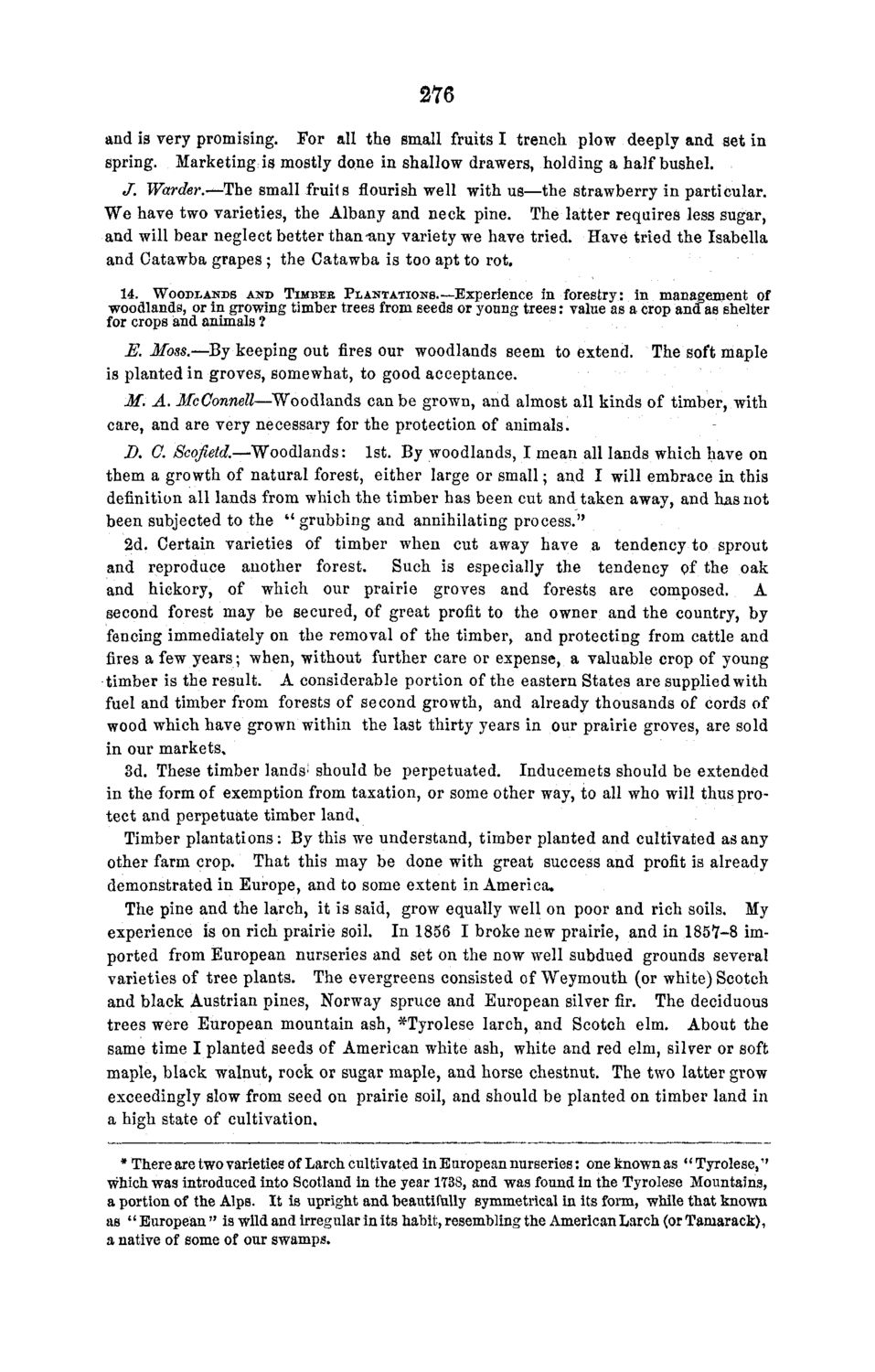| |
| |
Caption: Board of Trustees Minutes - 1868
This is a reduced-resolution page image for fast online browsing.

EXTRACTED TEXT FROM PAGE:
276 and is very promising. For all the small fruits I trench plow deeply and set in spring. Marketing is mostly done in shallow drawers, holding a half bushel. J. Warder.—The small fruits flourish well with us—the strawberry in particular. We have two varieties, the Albany and neck pine. The latter requires less sugar, and will bear neglect better than any variety we have tried. Have tried the Isabella and Catawba grapes ; the Catawba is too apt to rot. woodlands, or in growing timber trees from seeds or young trees: value as a crop ana as shelter for crops and animals ? E. Moss.—By keeping out fires our woodlands seem to extend. is planted in groves, somewhat, to good acceptance. The soft maple 14. WOODLANDS AND TIMBEE PLANTATIONS.—Experience in forestry: in management of M. A. McConnell—Woodlands can be grown, and almost all kinds of timber, with care, and are very necessary for the protection of animals. D. O. Scofietd.—Woodlands: 1st. By woodlands, I mean all lands which have on them a growth of natural forest, either large or small; and I will embrace in this definition all lands from which the timber has been cut and taken away, and has not been subjected to the * grubbing and annihilating pro cess." * 2d. Certain varieties of timber when cut away have a tendency to sprout and reproduce another forest. Such is especially the tendency pf the oak and hickory, of which our prairie groves and forests are composed. A second forest may be secured, of great profit to the owner and the country, by fencing immediately on the removal of the timber, and protecting from cattle and fires a few years; when, without further care or expense, a valuable crop of young timber is the result. A considerable portion of the eastern States are supplied with fuel and timber from forests of second growth, and already thousands of cords of wood which have grown within the last thirty years in our prairie groves, are sold in our markets, 3d. These timber lands1 should be perpetuated. Inducemets should be extended in the form of exemption from taxation, or some other way, to all who will thus protect and perpetuate timber land% Timber plantations: By this we understand, timber planted and cultivated as any other farm crop. That this may be done with great success and profit is already demonstrated in Europe, and to some extent in America. The pine and the larch, it is said, grow equally well on poor and rich soils. My experience is on rich prairie soil. In 1856 I broke new prairie, and in l S S W imported from European nurseries and set on the now well subdued grounds several varieties of tree plants. The evergreens consisted of Weymouth (or white) Scotch and black Austrian pines, Norway spruce and European silver fir. The deciduous trees were European mountain ash, *Tyrolese larch, and Scotch elm. About the same time I planted seeds of American white ash, white and red elm, silver or soft maple, black walnut, rock or sugar maple, and horse chestnut. The two latter grow exceedingly slow from seed on prairie soil, and should be planted on timber land in a high state of cultivation. * There are two varieties of Larch cultivated in European nurseries: one known as " Tyrolese," which was introduced into Scotland in the year 1T38, and was found in the Tyrolese Mountains, a portion of the Alps. It is upright and beautifully symmetrical in its form, while that known as " European " is wild and irregular in its habit, resembling the American Larch (or Tamarack), a native of some of our swamps.
| |